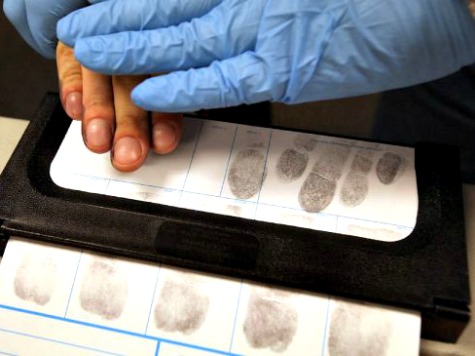On Tuesday, the LAPD acknowledged that there has been an exponential increase in the cases they have been working on that have unanalyzed fingerprint evidence, according to the Los Angeles Times.
The number of cases has risen more than 100% in the last two years, making the department’s efforts to solve crimes far more difficult. The number of cases was 2,200 in 2012, but has grown to 5,455.
Oddly, the problem has increased even though the LAPD has focused its efforts on processing fingerprints more quickly, even instructing officers to collect fingerprints at some crime scenes. LAPD Deputy Chief Kirk Albanese told the Police Commission that some fingerprints have been rendered useless because they have lain dormant for so long that the three-year deadline for prosecuting criminals was passed. He explained, “There are cases that we don’t get to that would generate a suspect identification. For me to say otherwise would be disingenuous.”
Chief Charlie Beck said the problem was “very problematic,” adding that a staffing shortage in the LAPD’s Latent Print Unit was largely responsible. He insisted that Los Angeles officials were “very aware” that the LAPD wanted more analysts, saying, “We’re working toward that.”
But according to Albanese, the immediate future looks dim, because there simply aren’t enough people dealing with the problem; the unit responsible has 60 employees, but full capacity would mean there should be 96. The unit last hired a staffer in January, 2009. He admitted that the department will be permitted to hire eight more analysts next March, but that the new analysts would not work in the field by themselves until a year from now. Albanese concluded, “The reality is, at the current staffing, there are going to be cases… we are going to be unable to get to.”
One way in which the LAPD had been addressing the problem was to examine fingerprints from violent crimes within eight-weeks of the crime. Property crimes were not given as high a priority. Police stations and specialized divisions could only ask for 10 property-crime cases to obtain fast-tracked analysis in any four-week period.
Albanese acknowledged, “We can’t get to every property crime. We just can’t. As much as that frustrates us, much like an emergency room, we have prioritized, and we are taking what is the greatest risk to public safety first.” He also stated that some backlogged fingerprint evidence would not help identify a suspect; many were of inferior quality.
Albanese summed up: “We’re going to have to do the very best we can with the resources we have until the city is able to allow us to hire to our authorized strength.”

COMMENTS
Please let us know if you're having issues with commenting.